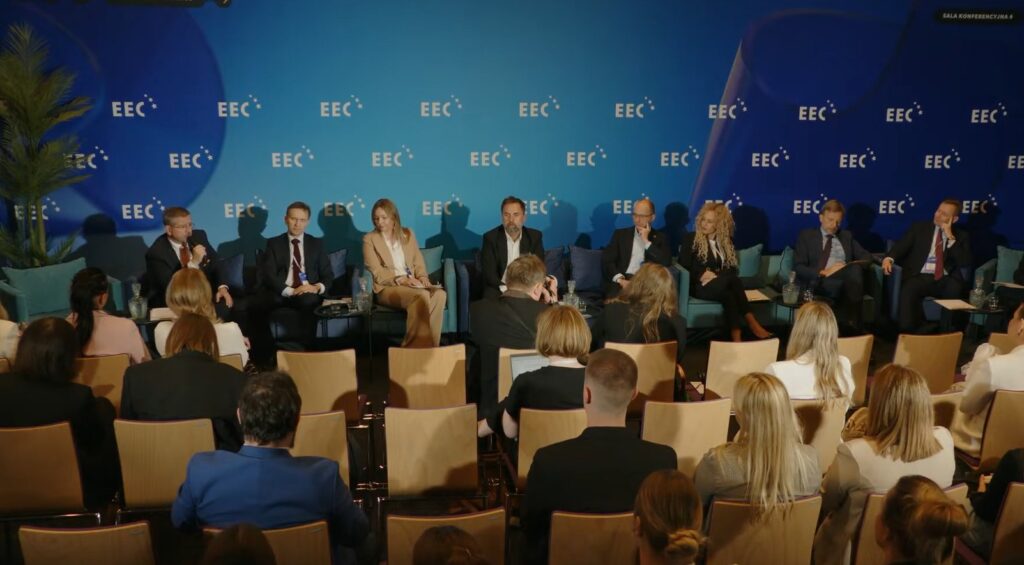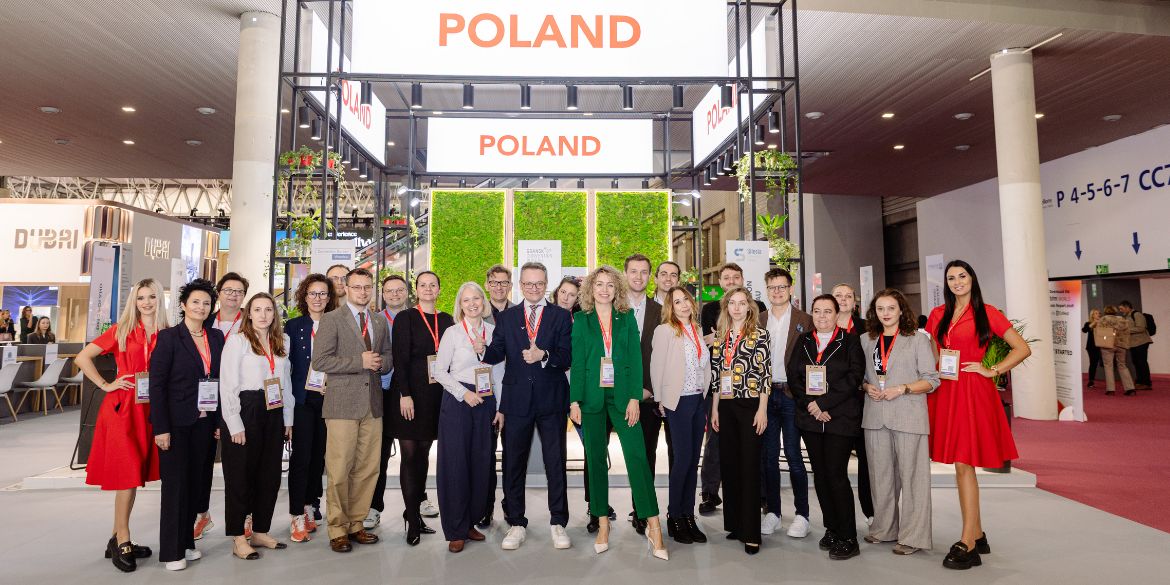The debate titled “MICE: Industry, Market, Relationships” was held during the 17th European Economic Congress in Katowice and moderated by Magdalena Kondas from the portal meetingplanner.pl, brought together representatives from the meetings and events industry, local government, and academia to discuss the conditions, challenges and prospects of the MICE sector in Poland.
Key Conclusions from the Debate
Condition of the MICE Market
Although 2024 is being viewed as a return to the pre-pandemic level of 2019, the industry is in a state of transformation or transition, shaped by factors such as digitalisation, the pandemic, war-related uncertainty as well as ESG and AI. While the number of events in Katowice is now comparable to pre-pandemic levels, hotel reports from Warsaw show slightly fewer meetings than in 2019. Geopolitical conditions, especially for long-haul international groups, have had a noticeable impact.
Katowice’s Significance as a MICE Destination
Katowice sees the MICE sector as key to its success as a modern metropolis rather than a traditional historic city. The city has invested heavily in infrastructure, including the International Congress Centre, the NOSPR concert hall and the Silesian Museum. Katowice is a success story of transformation from an industrial city into a modern one, recognised by the United Nations as host to major events like the Climate Summit and World Urban Forum. This transformation and authenticity are considered valuable.
When Katowice representatives asked the UN why the city was chosen again to host a global event, the answer was clear: “You’re the best. You succeeded.” The transformation from a coal-and-steel city to a modern metropolis was seen as the key success. Another reason cited: “You don’t have a cardboard district” – a nod to the well-understood Silesian work ethic, highlighting residents’ determination and openness to modernity. The authenticity of this transformation is a respected trait.
MICE is an important development direction for Katowice. The number of business meeting participants in Katowice last year (~7,000) increased compared to 2023. Katowice benefits from transportation access (three nearby airports), though it lacks a direct rail connection between the airport and the city.
Input from Hotel and Venue Operators
- Large hotel groups (e.g., Gołębiewski, Arche, Polski Holding Hotelowy) are investing in the MICE segment and see its potential despite challenges.
- There is growing demand for eco-certified venues – this is now a necessity rather than a competitive edge.
- “Bleisure” (business + leisure) travel is a growing trend, along with involving families in business trips, especially in resort-type venues with recreational infrastructure.
- Despite more events, profitability does not always increase due to rising operational costs and price stabilisation.
- In city hotels (e.g. in Warsaw), conference room occupancy remains relatively low. Large events (like Taylor Swift concerts or Intel Extreme Masters) are needed to drive traffic and promotion.
- A major challenge is the lack of luxury hotels in Poland, which affects the ability to attract prestigious events.
- Eastern border locations, while safe, are sometimes perceived as risky by international clients.
Rafał Kincer from Polski Holding Hotelowy emphasised that luxury hotels are scarce in both cities and across Poland. This shortage is critical for the MICE industry, as attracting high-end events often requires venues like Kempinski or Raffles (only one exists in Warsaw). Compared to cities like Madrid or Prague, where luxury tourism supplements conferences and helps maintain high occupancy and rates year-round, Poland is at a disadvantage.
Strategy and Collaboration
- A centralised national strategy for event acquisition is essential, along with public administration support in bidding and executing events.
- Public-private partnerships are crucial, and the example of the PTWP Event Center managing the MCK shows this can work effectively.
- Better coordination between local, regional, and metropolitan governments is needed when applying for major events.
- The industry should actively lobby for greater recognition of MICE by public authorities.
Legacy
Large events (e.g., Euro 2012) deliver long-term benefits, such as accelerated investment in infrastructure (airports, roads, hotels), benefiting the entire country.
Trends (ESG and AI)
Sustainability (ESG) is now a necessity, not just a competitive advantage. AI is already used for analytics and automation, but human-to-human relationships remain vital in hospitality.

Additional Insights
The debate also highlighted that Warsaw lacks a dedicated congress centre, which is an anomaly among European capitals. Major infrastructure investments (congress centres, roads, airport, rail) require strategic decisions and documentation at the national level. One example: a missing motorway segment, once built, led to a boom of Czech tourists, proving how critical transport infrastructure is for accessibility.
- Michał Kozak, CEO of Hotel Arłamów, described how attendees might arrive for a two-day conference, then have their families join them for vacation packages. This is common in venues with extensive recreational offerings (e.g., water parks, pools, kid zones). Moderator Magdalena Kondas linked this to the idea of “work-life harmony,” noting that the meetings industry is responding to the need to integrate professional and personal life.
- Deputy Mayor Waldemar Bojarun mentioned similar behaviour at medical conferences in Katowice – spouses attend the opening sessions, then enjoy the city’s shopping and offerings, showing a trend of lingering in destinations beyond the formal business portion.
- Karolina Parol from ARCHE SA confirmed this is a clear and emerging trend. The Polish hotel chain plans to open several new hotels. In 2024, Arche already launched two properties aimed mainly at MICE guests: the former police sanatorium in Nałęczów and Arche Klasztor in Wrocław. Two more hotels are planned for 2025 – Arche Hotel Airport in Gdańsk and a hotel in Muszyna, oriented toward the MICE segment. Moreover, Karolina Parol confirmed that Arche had started investments in Bytom, adding that the company is on the lookout for new locations in the region.
- Rafał Kincer stressed that environmental care and having certifications like Green Key have become mandatory. Clients and event participants now expect venues to operate sustainably, including zero-waste practices. The industry, including PHH, is working actively to integrate sustainability into its strategies.
Perspective of the Polish Tourism Organisation
Rafał Szmytke, President of the Polish Tourism Organisation (PTO), presented the institution’s perspective in detail regarding the meetings and events industry. He emphasised that for over 20 years, PTO has had a specialised unit, the Poland Convention Bureau (PCB), which reflects the recognition of the uniqueness and importance of this sector. It is the only such distinct unit within the structure of PTO.
Mr. Szmytke noted that the meetings industry generates the highest revenues in tourism. Although the number of tourists in the MICE segment may not be the largest, the financial impact of these guests on regional or national budgets is significantly higher. The overall contribution of tourism to Poland’s GDP is estimated at between 1 and 1.5%, though the president acknowledged that this might be underestimated. He stressed that accurately tracking this impact, as cities like Katowice do (over 1000 PLN in daily revenue per conference participant), is crucial to demonstrating the value of the sector.
Addressing the current state of the market, Szmytke stated that although 2019 is used as a benchmark, challenges did not end with the pandemic. The war in Ukraine casts a shadow over organised tourism and the MICE segment, which is particularly felt by international groups from more distant markets like Asia or the Americas. While Europe has “got used to” and understands the safety of visiting Poland, distant markets still perceive the war as a broader European issue.
Positive image of Poland abroad
On the other hand, Rafał Szmytke emphasised that Poland’s solidarity with Ukraine has created an extremely positive image of Poland abroad, particularly in the United States, where the country is viewed as a place of “extraordinarily friendly, wonderful people.” This kind of authenticity and empathy could not be generated by any advertising campaign.
However, this contrasts with the reality of the market, where insurers and tour operators in the U.S. remain risk-averse and are postponing the sending of organised groups. The president expressed confidence in the existence of pent-up demand from these markets, which could be unleashed and lead to growth once the conflict ends.
In terms of strategy, Mr. Szmytke welcomed the fact that the Ministry of Sport and Tourism has begun work on a national tourism strategy, and importantly, that one of the sub-strategies will be focused on the MICE sector. He underlined that the meetings industry must have a “proper place” in this strategy. He called on all industry stakeholders to advocate for the appropriate inclusion of this topic.
Debate participants included
- Rafał Szmytke (President of the Polish Tourism Organisation)
- Agnieszka Gawińska-Rucińska (Board Member, Gołębiewski Holding Sp. z o.o.)
- Karolina Parol (Director of Central Sales Department, ARCHE S.A.)
- Marcin Stolarz (CEO, PTWP Event Center Sp. z o.o.)
- Rafał Kincer (CEO, Polski Holding Hotelowy Group)
- Michał Kozak (CEO, Hotel Arłamów S.A.)
- Waldemar Bojarun (Vice Mayor of Katowice)
- Krzysztof Cieślikowski (University of Physical Education in Katowice)
The debate “MICE: Industry, Market, Relationships” during the 17th European Economic Congress in Katowice can be viewed on the YouTube channel.
Read also:




